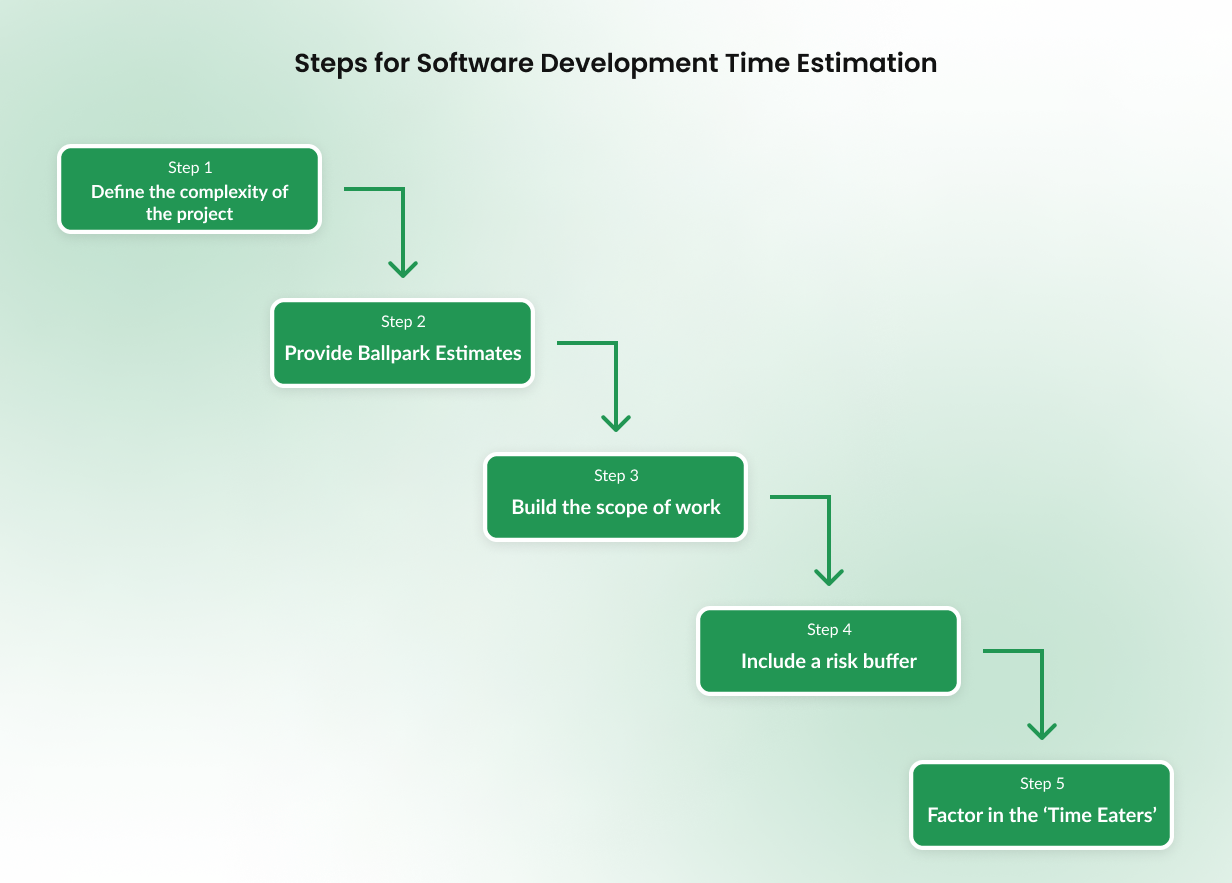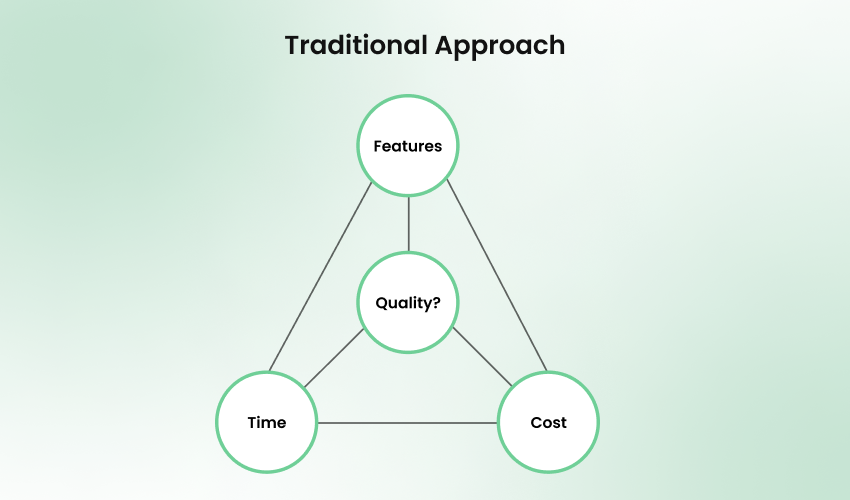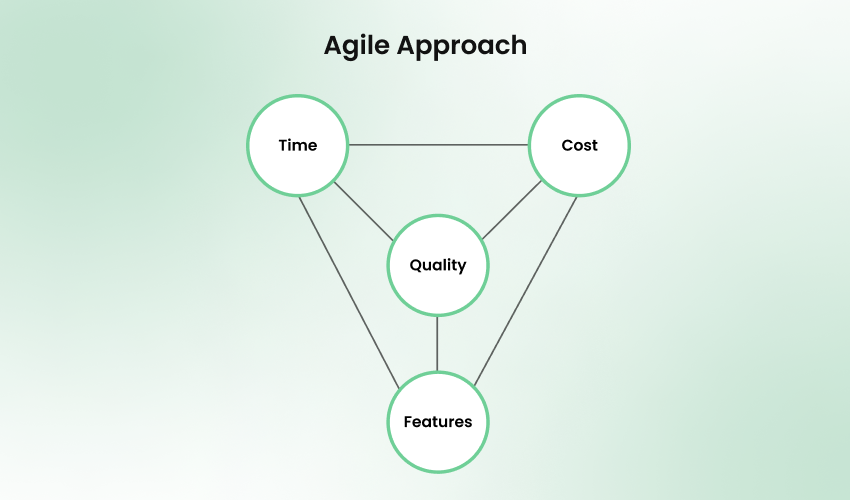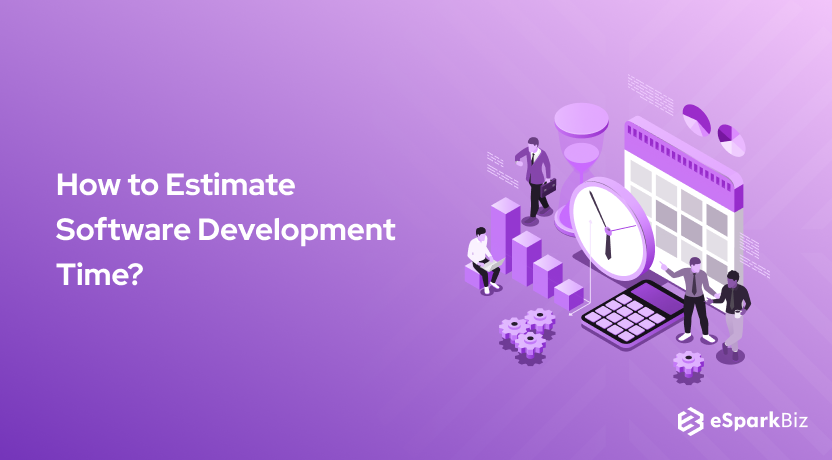In the digital era, outsourcing software development projects have become a common practice. However, the time taken to build software is often underestimated.
Did you know? According to Forbes, nearly 66 percent of large-scale software projects end up with budget overruns. Moreover, about 33 percent of projects overrun their schedules.

Exceeding the time estimations of software development projects may result in missed market opportunities, lost revenue, and an enlarged budget. Therefore, software development time estimation matters a lot.
Are you wondering how to estimate software development time? Read on to explore the details!
What is Software Development Time Estimation?
In simple words, software development time estimation refers to the determination of the time required for delivering all software development tasks. It depends on several factors, like the complexity of the project, the experience of the team members, and access to essential resources.
Why is Software Development Time Estimation Crucial for Organizations?
Estimating the software development time is essential for the following reasons:
- It allows the agile team and executives to figure out and plan for the objectives and goals of every stage of the software development projects.
- It helps prepare for unforeseen situations and manage them effectively.
- It helps avoid time and budget overruns.
- It ensures that the software product is launched in the target market on the planned date.
Now, to estimate this development time, each custom Software Development Company needs a very structured approach, evaluating every aspect of the project and its defined scope. To help plan this estimation, we will discuss globally accepted steps followed by top companies to accurately calculate the time for any project development.
So, let’s take a detailed look at each of these steps.
Steps for Software Development Time Estimation

Now that you have an idea of the significance of software development time estimation, you must understand the steps involved. Let’s dive in!
Step 1: Define the complexity of the project
First, you need to determine the complexity of the software development project. It can provide you with a clear idea of the development risks that impact time. Basically, the projects can be divided into three types. It includes:
- Known: It is all about developing simple software whose requirements are known. An example of a known project is building a basic customer portal for a startup.
Estimating the time of development in this case would be pretty simple and easy. So, you can expect accurate estimations. Moreover, the risks are known to be the lowest. - Knowable: Knowable projects refer to the ones that are predictable at the core, but certain requirements may need investigation. For instance, you may want to develop a simple customer portal and integrate it with ERP. In the case of such software development projects, you can expect small risks.
- Complex: Complex projects are the ones in which development requires the use of specific or innovative technologies. Moreover, the business requirements may also be uncertain. An example of a complex project is the development of custom software based on agile methodologies. For such projects, estimating the development time can be challenging. Also, you can expect high risks during the development process. Having a clear understanding of the complexity of software projects can make it easier to determine the time required for their development.
Also Read – Software Development Challenges and Solutions
Step 2: Provide ballpark estimates
Before diving into the detailed estimation of the software development time, the in-house decision-maker may make a general judgment about the duration of the project. Once you determine the project’s complexity, you can give ballpark estimates.
Such estimates are usually based on previous experience with similar projects. Moreover, you can even take into consideration the industry benchmarks of similar projects to give an estimation.
Step 3: Build the scope of work
After giving ballpark estimates, you must focus on building the scope of work. Make sure that it covers all the requirements of the software development project. Assess each of the requirements very carefully.
Moreover, you must also factor in the software development methodologies that you are planning to use. Some of the most common methodologies that are used are:
Traditional Methodologies

When it comes to software development methodology, traditional methodologies like Waterfall are quite popular. They usually have rigid requirements and remain constant over time.
Start breaking down the system requirements into small and easy-to-estimate chunks of work. You can leverage a tree structure, or the Work Breakdown Structure (WBS), to gain insights into each of the software development stages along with the associated tasks.
Once you break down the work, you can prepare time estimations for individual tasks. For that, you can make use of the following methods:
- Wideband Delphi: Wideband Delphi is consensus-based, in which all the team members individually estimate the different WBS tasks. They engage in comparing the results, raising potential concerns, and negotiating each estimate.
- Analogy: It is a data-driven estimation technique in which estimates are based on similar activities in previous projects. However, if you find that the estimates and real-time taken in previous projects do not match, you can consider the activities likely to pose risks in terms of duration, effort, and time.
A point to note here is that developing precise time estimates is relatively easier for small projects. However, for large-scale projects, it is ideal to use maximum/ minimum time ranges for individual tasks. It will ensure that no single issue can have a huge impact on the duration of the project.
Agile Methodologies

In the case of agile methodology, the scope of work keeps changing owing to changes in requirements. The workload is developed based on end-user value; the more value a feature offers, the faster it will get developed. This planned workload is usually shown in the backlog.
However, in agile projects, instead of estimating the required time, focus on determining the required effort. Here, story points can act as your effort consumption unit for different user stories.
To determine the value of user stories, conducting a planning poker session is a great idea. Wondering how it works? Take a look at the process.
- Each of your team members will have a set of poker cards. The value of the cards will be 1, 2, 3, 5, 8, 13, 20, 40, and 100 story points.
- You start estimating the complexity of a well-known user story. Your team members need to give story points to the particular user story. Once done, the sample story is used by everyone as a reference to estimate the level of difficulty of other stories.
- Make sure to cover all user stories present in the backlog. Your team members estimate the complexity of individual stories by selecting a value card and putting it face down. After everyone is done, the cards are revealed and discussed.
A point to note here is that the value of individual stories isn’t defined by the average of the results. Instead, all the team members reach an agreement and determine which estimate from the suggested ones works the best.
With the help of the poker session results, it is easy to convert efforts into the approximate time duration of software development. It can be done once the project begins.
Step 4: Include a risk buffer
Unforeseen situations may pop up at any time. Therefore, it is worth adding a risk buffer of 5 to 25% of the total project time based on the level of complexity outlined in Step 1. Some of the commonly faced risks are:
- Hard-to-foresee issues: These may include integration issues and the failure of software when the user base starts increasing.
- The unpredictability of modern technologies: An example is a third-party API or AI innovation that the customers intend to use.
- Conflicts within a team: For instance, two experienced developers may have different approaches to the same matter, adversely affecting efficiency.
Also Read – How to Build Effective Remote Team with a Strong Company Culture?
Step 5: Factor in the ‘Time Eaters’
Time eaters such as productivity drops, the closure of communication gaps, and team meetings cannot be overlooked. Therefore, make sure to add a minimum of 20% of the project’s time for these time eaters.
Compiling all the steps outlined above, you will get a formula for software development time estimation that you can use smartly.
Project Duration = Estimation of overall task time (E) + E*risk buffer + E*Time eaters.
For instance, if the overall task time estimation of a project is 7,200, the duration will be
8,000 + 8,000*0.25 + 8,000*0.20 = 11,600 hours.
Final Words
Software development time estimation is indeed crucial to the success of software development projects. It helps minimize the chances of software development cost and time overruns. Moreover, it helps the team members prepare better to handle unforeseen situations.
Estimating the time can enable you to make the most of all your available resources and ensure optimum success. When determining the time, be sure to factor in the unique requirements of your business.
By now, you must have a comprehensive idea of how to determine the software development time. Leverage the steps mentioned in this article and find out the time required for your software development project. And partner with a reliable software development outsourcing firm to stay ahead in the competitive era.







